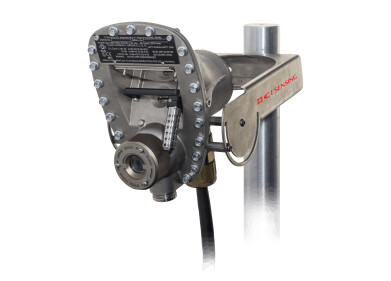Air Monitoring
AirSENCE DUST-WATCH - A dedicated caaqMMS system for comprehensive particulate monitoring
Sep 07 2021
Particle pollution, commonly known as dust pollution, consists of solid particles and liquid droplets found in ambient air. These airborne particles are a severe human health hazard and cause impaired vision, environmental degradation, and damage to agriculture and livestock.
The size of a pollutant particle is directly linked to its potential for causing various damages. Particulates are divided into three major groups based on their size:
Coarse particles, PM10, are particles between 10 and 2.5 microns in diameter. These consist of sea salt; dirt and dust from factories, farming, and roads; mold, spores, and pollen. They are also generated while crushing and grinding rocks and soil.
Fine particles, PM2.5, are particles between 2.5 and 1 microns in diameter. These largely consist of secondary aerosols that form from precursor gases in the air, and may contain toxic organic compounds and heavy metals. Fine particles may be generated by automobile exhaust, burning garbage and landfills, and by-products of smelting and processing metals.
Ultrafine particles, PM1, are particles smaller than 1 micron in diameter. These consist of dust, combustion particles, and viruses. They are primarily generated by wildfires, vehicular and industrial emissions, or from biological sources.
Health Hazards
All three particulate size fractions pose severe health risks:
PM10 particles can go deep into the respiratory systems of humans and animals, and may thus lead to upper respiratory tract infections, irritation, coughing or difficulty in breathing.
PM2.5 particles are small enough to make their way to the alveoli, where they may cause worsening lung functions, aggravated asthma, irregular heartbeat, initial cardiovascular disorder, and lung cancer.
PM1 particles are so small that they can penetrate cell walls and enter the bloodstream. As such, PM1 is a major risk factor for severe cardiovascular diseases, stroke, lung cancer and premature death.
Environmental hazards
Particulate pollution may damage the environment in several ways:
- Particulates can significantly reduce visibility, thus contributing to vehicular accidents on roadways
- Depending on their size and composition, particles settling in the environment can make water bodies more acidic and change the nutrient balance of soil, coastal waters, and river basins.
- Particulates can block the stoma of vegetation and interfere with photosynthesis, thereby damaging forests and disrupting crop growth.
- Particulate matter can be a contributor to acid rain, which increases erosion and damages historical monuments and architecture.
AirSENCE DUST-WATCH is a dedicated continuous air monitoring system that carries the strong legacy of AirSENCE, an Advanced, Accurate and Affordable continuous ambient air quality Micro-Monitoring System.
AirSENCE DUST-WATCH is a preconfigured system and continuously measures PM10, PM2.5 and PM1 along with environmental parameters including temperature, humidity, wind speed & direction, and ambient noise.
AirSENCE DUST-WATCH features a small footprint, low cost, autonomous operation, and cloud data storage, making it the perfect solution for continuous particulate monitoring. It supports applications for diverse environments such as railway stations, seaports, airports, schools, construction sites, mines, and communities located in and around industrial activities.
Digital Edition
AET 28.2 April/May 2024
May 2024
Business News - Teledyne Marine expands with the acquisition of Valeport - Signal partners with gas analysis experts in Korea Air Monitoring - Continuous Fine Particulate Emission Monitor...
View all digital editions
Events
Jul 10 2024 Birmingham, UK
Jul 21 2024 Cape Town, South Africa
Australasian Waste & Recycling Expo
Jul 24 2024 Sydney, Australia
Jul 30 2024 Jakarta, Indonesia
China Energy Summit & Exhibition
Jul 31 2024 Beijing, China



















